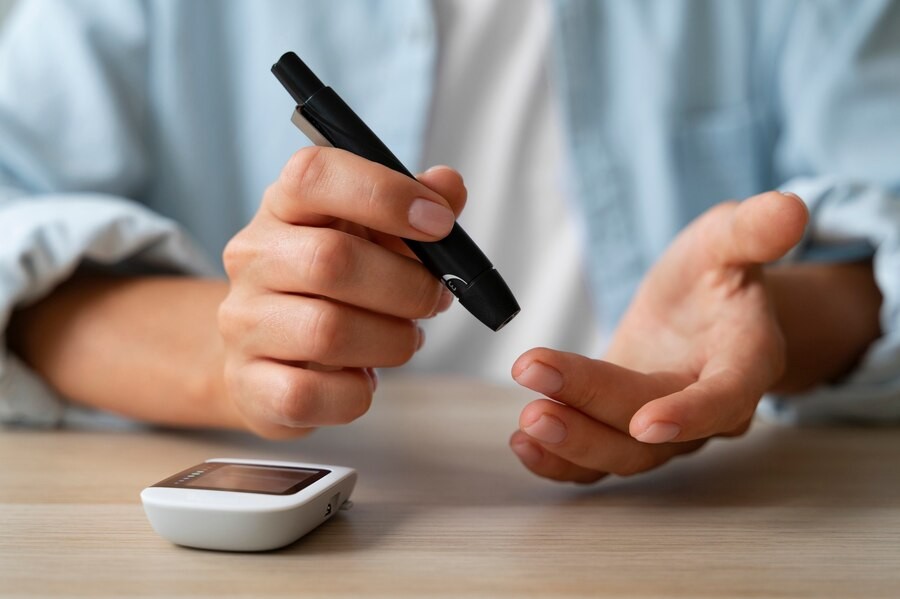Buah-buahan mengandung gula alami yaitu fruktosa dan glukosa. Gula alami inilah yang memberikan rasa manis pada buah.
Kadar gula dalam buah-buahan sangat bervariasi. Ada buah yang memiliki kadar gula lebih tinggi daripada yang lain, artinya Anda harus bijak dalam mengonsumsi buah khususnya bila memiliki riwayat diabetes. Buah-buahan apa saja sih yang tinggi kadar gulanya?
Buah-Buahan yang Tinggi Kadar Gulanya
Mangga
Mangga adalah buah tropis yang lezat dan menyegarkan, namun buah ini mengandung cukup banyak gula alami terutama fruktosa. Rata-rata sebuah mangga mengandung sekitar 46 gram gula, jumlah gulanya meningkat berdasarkan tingkat kematangan mangga.
Orang dengan diabetes atau yang mencoba menjaga berat badan perlu membatasi asupan mangga. Konsumsi mangga dengan membaginya dalam beberapa porsi, tidak perlu makan satu buah mangga sekaligus atau kombinasikan mangga dengan buah lain.
Anggur
Selain mangga, anggur juga mengandung kadar gula alami yang cukup tinggi. Segenggam anggur mengandung sekitar 23 gram gula. Kandungan gula dalam anggur inipun juga berbeda-beda, tergantung pada jenis anggur dan tingkat kematangannya.
Pisang
Pisang mengandung gula alami yang kadar gulanya meningkat seiring kematanngannya. Rata-rata dalam satu buah pisang mengandung sekitar 15,4 gram gula.
Meskipun pisang bukan buah yang terlalu manis dibandingkan dengan mangga atau anggur, Anda tetap perlu membatasi porsinya.
Baca Juga: Cara Menurunkan Kadar Gula Darah Secara Alami
Jeruk
Jeruk adalah buah yang kaya serat namun sebuah jeruk yang besar mengandung sekitar 17,2 gram gula. Konsentrasi kadar gulanya akan berlipat bila dikonsumsi sebagai jus, apalagi dalam segelas jus ada lebih dari satu buah jeruk yang digunakan sebagai bahannya.
Nanas
Dalam satu cup nanas, terdapat kandungan gula sekitar 16,3 gram. Kadar gula inilah yang menyebabkan rasa manis dan lengket. Kadar gula dalam nanas lebih tinggi jika buah ini diolah menjadi jus, dikeringkan atau disajikan sebagai selai.
Semangka
Selain kandungan air yang tinggi, semangka juga memiliki kadar gula yang mencapai 9,42 gram dalam setiap cupnya. Dibandingkan dengan buah lain memang kadar gula semangka tidak terlalu tinggi, namun rasa segar yang diberikan oleh semangka membuat Anda ingin makan dalam porsi lebih banyak.
Tips Aman Mengonsumsi Buah-Buahan
Bagaimanapun, buah-buahan adalah sumber nutrisi alami yang kaya akan vitamin, mineral, serat dan karbohidrat yang sehat. Sekalipun beberapa buah tinggi kadar gulanya, mereka masih termasuk camilan yang sehat dibandingkan makanan olahan seperti kue kering, keripik, muffin, cake, yang seringkali tinggi lemak jenuh, gula tambahan dan natriumnya.
Untuk itu, ikuti tips mengonsumsi buah-buahan berikut ini:
Batasi porsinya
Porsi adalah faktor penting untuk dipertimbangkan saat mengonsumsi buah apapun, khususnya yang tinggi kadar gulanya. Menurut USDA, wanita dewasa sebaiknya mengonsumsi 1,5 hingga 2 cup buah setiap hari, sementara pria dewasa mengonsumsi 2-2,5 cup buah setiap hari.
Sedangkan American Diabetes Association merekomendasikan Anda untuk menggunakan metode piring dalam merencanakan asupan nutrisi yang seimbang, termasuk sayuran, protein, karbohidrat dan buah-buahan.
Baca Juga: Gejala yang Dirasakan Bila Kadar Gula Darah Tinggi
Hindari buah olahan
Memilih buah segar atau buah beku adalah salah satu cara mendapatkan manfaat nutrisi buah tanpa khawatir akan gula yang berlebihan. Buah-buahan yang diolah menjadi jus, sirup, selai, atau buah kaleng mengandung kadar gula yang lebih tinggi, yang sebaiknya dihindari apabila Anda menderita diabetes atau sedang berusaha menurunkan berat badan.
Buah segar atau beku mempertahankan nutrisi lebih baik daripada buah-buahan olahan. Makan buah segar atau beku juga membantu mengontrol asupan karbohidrat agar tidak berlebihan.
Membagi porsinya
Membagi buah beberapa porsi untuk dikonsumsi dalam sehari adalah strategi terbaik untuk menjaga asupan nutrisi dan kadar gula darah tetap stabil. Dengan cara ini Anda tetap bisa mendapatkan manfaat nutrisi dan terhindar dari lonjakan gula yang tajam dibandingkan saat mengonsumsinya dalam satu waktu.
Bila Anda memiliki riwayat diabetes atau ingin menurunkan berat badan, sebaiknya konsultasikan dengan dokter atau ahli gizi dalam pemilihan buah-buahan. Dokter bisa merekomendasikan jenis dan porsi buah sebagai camilan sehat Anda. Anda juga bisa memanfaatkan layanan konsultasi kesehatan dengan mengunduh aplikasi Ai Care melalui App Store atau Play Store.
Mau tahu informasi seputar nutrisi, makanan dan tips diet lainnya? Cek di sini, ya!
- dr. Monica Salim
WebMD (2023). Which Fruits Have the Most Sugar?. Available from: https://www.webmd.com/diet/ss/slideshow-fruit-sugar
Cleveland Clinic (2023). Which Fruits Have the Most Sugar?. Available from: https://health.clevelandclinic.org/fruits-high-in-sugar/
Caroline Leopold (2023). Can you eat fruit with diabetes? What are the best and worst options?. Available rom: https://www.medicalnewstoday.com/articles/311220
Zawn Villines (2019). What to know about sugar in fruit. Available from: https://www.medicalnewstoday.com/articles/325550
Lindsey DeSoto, RD, LD (2023). Here’s Why Mangoes Are So Good for You:. Available from: https://www.verywellhealth.com/mangoes-7501099
Annette McDermott (2019). Are Grapes Good for You?. Available from: https://www.healthline.com/health/food-nutrition/are-grapes-good-for-you
Camille Noe Pagan (2022). Diabetes and Fruit. Available from: https://www.webmd.com/diabetes/fruit-diabetes











